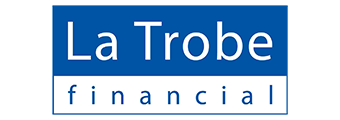On this page:
- What is a self-managed super fund?
- Who has an SMSF?
- Risks and responsibilities of running an SMSF
- Costs of running an SMSF
- Pros and cons of SMSF’s
- SMSF suitability
- How to start an SMSF
A self-managed super fund (SMSF) can be great for those who have the time and know-how to manage one because they offer the kind of flexibility and control that retail and industry super funds don’t. On paper, an SMSF sounds like a no-brainer - after all, who doesn’t want total control over how their hard-earned retirement savings are invested?
But an SMSF is a pretty major investment decision which takes a fair amount of legal knowledge, as well as time and money to set up. You’ll also need a pretty decent super balance (yes, sometimes bigger really is better) and a very good understanding of the risks involved in managing your own super. After all, you can face some pretty serious legal consequences if you breach regulations.
If you’ve been thinking about taking a DIY approach to your super, don’t do it just cos your parents are. Here’s what you need to know about what it takes to manage an SMSF (hint: a lot).
Need somewhere to store cash and earn interest? The table below features savings accounts with some of the highest non-introductory and introductory interest rates on the market.
| Lender | Home Loan | Interest Rate | Comparison Rate* | Monthly Repayment | Repayment type | Rate Type | Offset | Redraw | Ongoing Fees | Upfront Fees | Max LVR | Lump Sum Repayment | Extra Repayments | Split Loan Option | Tags | Features | Link | Compare | Promoted Product | Disclosure |
|---|---|---|---|---|---|---|---|---|---|---|---|---|---|---|---|---|---|---|---|---|
6.49% p.a. | 6.51% p.a. | $3,157 | Principal & Interest | Variable | $null | $230 | 70% |
| Promoted | Disclosure | ||||||||||
6.74% p.a. | 6.79% p.a. | $3,240 | Principal & Interest | Variable | $0 | $220 | 70% | Disclosure | ||||||||||||
6.75% p.a. | 7.16% p.a. | $3,243 | Principal & Interest | Variable | $30 | $null | 80% | |||||||||||||
6.59% p.a. | – | $3,190 | Principal & Interest | Variable | $0 | $995 | 80% | |||||||||||||
7.00% p.a. | 7.39% p.a. | $3,327 | Principal & Interest | Variable | $0 | $445 | 60% | |||||||||||||
7.24% p.a. | 7.29% p.a. | $3,407 | Principal & Interest | Variable | $0 | $221 | 80% | Disclosure | ||||||||||||
6.59% p.a. | 7.15% p.a. | $3,190 | Principal & Interest | Variable | $395 | $null | 60% | |||||||||||||
6.99% p.a. | 7.01% p.a. | $3,323 | Principal & Interest | Variable | $0 | $230 | 80% |
| Promoted | Disclosure |
What is a self-managed super fund?
As the name implies, a self-managed super fund is managed by you. So unlike your typical retail or industry superannuation fund where you effectively outsource how your retirement nest egg is invested to a superannuation provider, you’re in charge of where that money is invested.
Sounds good right? So what does that look like? Well, most retail and industry superannuation funds let you choose from a range of basic investment options which usually include growth, balanced, ethical, conservative, cash, etc. But you usually can’t directly pick which shares to invest in or see what shares your investment option is invested in, other than an overview of how much of your super is allocated into different asset classes (e.g. 22% Australian shares, 32% international shares, 4% cash, 15% property, etc).
But an SMSF allows you to choose your own investments as well as offering a wider range of investment options that many industry and retail super funds don’t offer. According to Director of Tax Communications at H&R Block, Mark Chapman, “artwork and other collectables, physical gold and investments in some unlisted entities are all permitted within an SMSF”.
An SMSF can have up to four members who are friends or family, all of whom must be trustees and as a result, are equally responsible for decisions made about the fund and the compliance of the fund with super and tax laws.
What sort of Australian has an SMSF?
As we’ve already mentioned, over one million Aussies have an SMSF - but they’re not all old white men. According to the Australian Tax Office (ATO), the gender split between SMSF fund members is actually pretty even, with 47.3% of members women and the remaining 52.7% men.
The age ranges of people with an SMSF fund are also pretty evenly spread across both genders, with the lion’s share of SMSF fund members between the ages of 35 and 84.
Not many Australians under the age of 34 have an SMSF.
Proportion of SMSF fund members by sex and age:
|
Age ranges |
Male |
Female |
Total |
|---|---|---|---|
|
<25 |
0.5% |
0.5% |
0.5% |
|
25-34 |
3.2% |
3.3% |
3.2% |
|
35-44 |
10.8% |
11.7% |
11.2% |
|
45-49 |
9.7% |
10.5% |
10.1% |
|
50-54 |
10.9% |
11.7% |
11.3% |
|
55-59 |
12.9% |
13.5% |
13.2% |
|
60-64 |
13.0% |
13.7% |
13.3% |
|
65-69 |
12.9% |
13.4% |
13.1% |
|
70-74 |
12.3% |
11.4% |
11.8% |
|
75-84 |
11.7% |
9.0% |
10.4% |
|
85+ |
2.2% |
1.3% |
1.8% |
|
Total |
100% |
100% |
100% |
|
All ages |
52.7% |
47.3% |
100% |
(As at end of June 2019). Source: ATO
However, according to the ATO, young people are increasingly beginning to establish their own SMSFs.
In the March 2020 quarter, 13.7% of new SMSF fund members were between the ages of 25-34, and 1.4% under the age of 25.
Age and sex of members of SMSFs established during March 2020 quarter
|
Age ranges |
Total members |
Male |
Female |
|---|---|---|---|
|
Under 25 |
1.3% |
1.6% |
1.4% |
|
25–34 |
13.0% |
14.7% |
13.7% |
|
35–44 |
34.3% |
32.2% |
33.4% |
|
45–49 |
17.5% |
17.8% |
17.6% |
|
50–54 |
14.1% |
14.9% |
14.5% |
|
55–59 |
10.8% |
10.7% |
10.7% |
|
60–64 |
5.5% |
4.8% |
5.2% |
|
65–69 |
2.2% |
1.9% |
2.1% |
|
70–74 |
0.9% |
1.0% |
1.0% |
|
75–84 |
0.3% |
0.3% |
0.3% |
|
85+ |
0.2% |
0.2% |
0.2% |
Source: ATO
Not everyone who has an SMSF is necessarily on a six-figure income. While it’s true that in the financial year 2017/18 the average taxable income of all SMSF members was $117,000, the median taxable income was $64,000.
As you can see from the table below, many fund members who established an SMSF fund in the March 2020 quarter were on a taxable income of between $0 to $100,000. These members represented more than half (50.9%) of all new SMSF members.
Taxable income range of members of SMSFs established during March 2020 quarter
|
Income ranges |
Male |
Female |
Total |
|---|---|---|---|
|
$0 to $20,000 |
6.7% |
16.0% |
10.6% |
|
>$20,000 to $40,000 |
9.8% |
18.1% |
13.4% |
|
>$40,000 to $60,000 |
12.1% |
18.1% |
14.7% |
|
>$60,000 to $80,000 |
14.8% |
14.7% |
14.7% |
|
>$80,000 to $100,000 |
13.0% |
11.2% |
12.2% |
|
>$100,000 to $150,000 |
21.3% |
10.5% |
16.7% |
|
>$150,000 to $200,000 |
9.7% |
4.3% |
7.4% |
|
>$200,000 to $500,000 |
8.6% |
3.3% |
6.3% |
|
>$500,000 |
2.1% |
0.4% |
1.4% |
|
Unknown |
1.8% |
3.4% |
2.5% |
|
Total |
100% |
100.0% |
100.0% |
Source: ATO
The point I’m trying to make here is that SMSFs aren’t just for old rich white guys. People of all ages, genders and income levels run and manage their own SMSFs, and you probably can too.
Risks and responsibilities of running an SMSF
With that said, managing your own superannuation is a major decision that comes with a boatload of risk and responsibility that not everyone is equipped to handle.
Mr Chapman says people need to make sure they understand what they’re getting themselves into.
“When you ‘self-manage’ your retirement savings you take on the responsibility of all investment decisions; compared to outsourcing this duty to an investment manager within an industry or retail super fund,” he told Savings.com.au.
“Therefore, as a trustee, you should make sure you have a reasonable understanding of investment options and markets as poor investment decisions will have a direct impact on the assets of your fund and also the retirement savings of other members. Some people simply do not have this expertise.”
Mr Chapman said trustees are also responsible for making sure their fund is compliant with the legislation and rules - a responsibility not to be taken lightly.
“Trustees should become familiar with the tax laws governing superannuation,” he said.
“If the ATO considers there has been a breach of these obligations and responsibilities it can impose high penalties on trustees who will be personally liable. Serious breaches can result in an imposition of a tax rate of up to 47%.”
Yep, that’s a 47% tax rate on the balance of the fund, which means you could easily lose nearly half the balance of your hard-earned retirement savings. Severe breaches of compliance may also lead to civil or criminal prosecution, and jail time can even be enforced for the most serious offences.
But it’s important to keep in mind that for the majority of people who are just trying to do the right thing and accidentally make a minor mistake, the ATO will encourage SMSF trustees to comply with super laws by undertaking further education and only escalate action when it’s required.
SMSF funds also demand a lot of time on the part of trustees to make sure investments are being managed properly. Mr Chapman says the time involved in running an SMSF depends on how involved in the process you want to be.
“If you engage professionals to undertake much of the administration and management, you won’t need to spend much of your own time on these tasks. Alternatively, if you choose to do much of the hard work yourself, your time commitment will be greater,” he said.
“It’s really a trade-off between time and fees, which each individual needs to consider according to their own circumstance.
“Fortunately there are SMSF administration managers, such as H&R Block SMSF Solutions, who can assist you in maintaining the accounting records of your fund and making sure your fund remains compliant.”
Costs of running an SMSF
Setting up and running an SMSF ain’t cheap.
According to a factsheet published by the Australian Securities and Investments Commission (ASIC) in October 2019, it costs an average of $13,900 per year to run an SMSF. However, ASIC notes this information is expired but has not yet issued an updated factsheet.
On the other hand, the most recent data from the ATO released in June 2020 states that the median annual expense for operating an SMSF was $3,923 in the 2017/18 financial year - quite a substantial difference!
According to Mr Chapman, typical SMSF start-up costs are around $750 (if you have an individual as trustee) or $1,590 (with a corporate trustee, including the ASIC set-up fee).
“You will also need to pay the annual supervisory levy to the ATO and arrange for an accountant to prepare the financial statements and tax return, and conduct an independent audit,” he said.
“Total annual accountants costs are around $2,350. You may also choose to pay for financial advice and insurance for members and you may need to pay for valuations of fund assets.”
Here’s a detailed breakdown on how much it costs to run an SMSF.
Pros and cons of SMSF’s
Pros:
Wide range of investment choice
One of the biggest benefits of an SMSF is the wide range of investment options that are on offer compared to other superannuation funds.
Mr Chapman says an SMSF opens the door to investing in just about anything.
“With some limited exceptions, a SMSF can invest in virtually anything providing that this also meets the sole purpose test and adheres to the regulations. This includes investing in direct property,” he said.
“An SMSF can also borrow to purchase an asset, however this is becoming increasingly difficult as many banks have removed their SMSF lending products from the market.”
Mr Chapman says SMSFs can be especially attractive to small business owners or the self-employed as a commercial property can be purchased by their SMSF.
“This property can then be rented to their business providing this is at the prevailing market rates.”
Flexibility and control
Another major benefit of an SMSF is the flexibility and control they provide that isn’t possible with retail or industry funds.
“As the members of the fund are also the trustees there is the flexibility to tailor the rules of the SMSF to suit their specific needs and circumstances. This is not available with other superannuation funds,” Mr Chapman said.
“Managing your own super investments directly allows you to make quick adjustments regarding your portfolio following market changes or to take up sudden investment opportunities.”
Protection from creditors
In most cases, creditors (people to whom money is owed) cannot generally access a person’s superannuation if that person goes bankrupt, regardless of whether they are with an SMSF, industry or retail super fund.
But Mr Chapman warns there may be some instances where creditors can access a person’s superannuation.
“That is unless clawback laws apply where someone has deliberately transferred their assets into a SMSF to escape paying their creditors,” he said.
Pooling your super with others
Unlike a retail or industry super fund, SMSFs allow you to pool your superannuation with up to three other people.
“This opens up the opportunity to invest in things an individual may not be able to on their own such as direct property,” he said.
Cons:
Unable to live overseas
If you’ve got an SMSF and decide you want to move overseas, you may find yourself in trouble with the Tax Office.
“The majority of a SMSF’s members must permanently reside within Australia. If you intend to move overseas permanently or make contributions to you fund while living overseas this could make your fund non-compliant with the law,” Mr Chapman said.
Costs of running an SMSF can be expensive
As we’ve mentioned, SMSF’s can be kind of expensive to run and manage. Mr Chapman says they can become even more expensive to run if your super balance is too low.
“The cost of running an SMSF can be disadvantageous when the assets held within the SMSF are low in value. Many SMSF management costs are fixed and can therefore erode low value SMSFs,” he said.
“Costs to operate a SMSF do, however, reduce proportionately when the value of the fund’s assets are high. You must do the maths and see whether a SMSF is worthwhile for you based on your particular circumstances.”
He says the general consensus is that you should have at least $250,000 of assets in your fund to make the costs of running an SMSF worthwhile.
Time consuming
Again, SMSF’s can be very time consuming to manage which means they won’t be suitable for those who aren’t prepared to spend lots of time researching investments and keeping tabs on the performance of those investments.
Of course, as Mr Chapman has mentioned, it is possible to outsource some of this work to professionals.
Legal risks
One of the biggest negatives of running an SMSF is that you’re responsible for making sure your fund is compliant with all the rules and regulations and if it’s not, be willing to accept full responsibility for that which could see you hit with a massive fine or end up facing court or even jail time - depending on how naughty you’ve been.
Suitability of an SMSF
An SMSF might be right for you if:
- You’ve got a legal background or good legal knowledge
- You are very financially literate
- You’ve got a big super balance (the Productivity Commission says SMSFs with balances below $500,000 produce lower returns on average, but the general consensus among experts like Mr Chapman is that a $250,000 balance is enough)
- You are willing to invest significant amounts of time researching investment options and managing your fund
- You understand the costs associated with running an SMSF and can cover these costs
- You want complete control of your superannuation
- You have your own income and disability protection insurance (whatever level of cover you have within your current retail or industry super fund will be lost when you move to SMSF)
An SMSF may not be right for you if:
- You have a very low superannuation balance
- You’re not financially literate
- You aren’t willing to put in the time or money to run an SMSF
- You’re not prepared to take on the legal risks of running an SMSF
Mr Chapman says most people who decide to start an SMSF do so because they want to choose and manage their own super investments.
“They are often dissatisfied by the performance of their super to date and believe they can do a better job, generating higher returns.
“Often a SMSF is created as part of a ‘whole of wealth’ plan by families that run their own business, since the SMSF itself can play a key role in the business, for instance owning the business premises from which the business is run.”
Alright, an SMSF is for me. Where do I sign up?
For those who decide running an SMSF is for them, Mr Chapman says the next step is to seek out advice from the pros.
“Navigating the path to setting up and managing your own SMSF can be challenging, and it really helps to have knowledgeable advisors by your side to avoid making mistakes and running into trouble with the ATO,” Mr Chapman said.
Professionals, like H&R Block SMSF Solutions, can help you decide whether setting up an SMSF is the right move for you and if it is, can also assist with setting up and managing the fund.
Savings.com.au’s two cents
The bottom line is that while an SMSF sounds like a no-brainer on paper in that it gives you total control over your superannuation, the reality is that SMSFs are like the elite sports-player of superannuation funds. Not everyone has the level of skill or knowledge it takes to manage an SMSF, which is fine by the way - it’s why retail and industry superannuation funds exist for the rest of us.
If you are considering an SMSF, please consider seeking out independent financial advice before making any decisions.

Ready, Set, Buy!
Learn everything you need to know about buying property – from choosing the right property and home loan, to the purchasing process, tips to save money and more!
With bonus Q&A sheet and Crossword!







